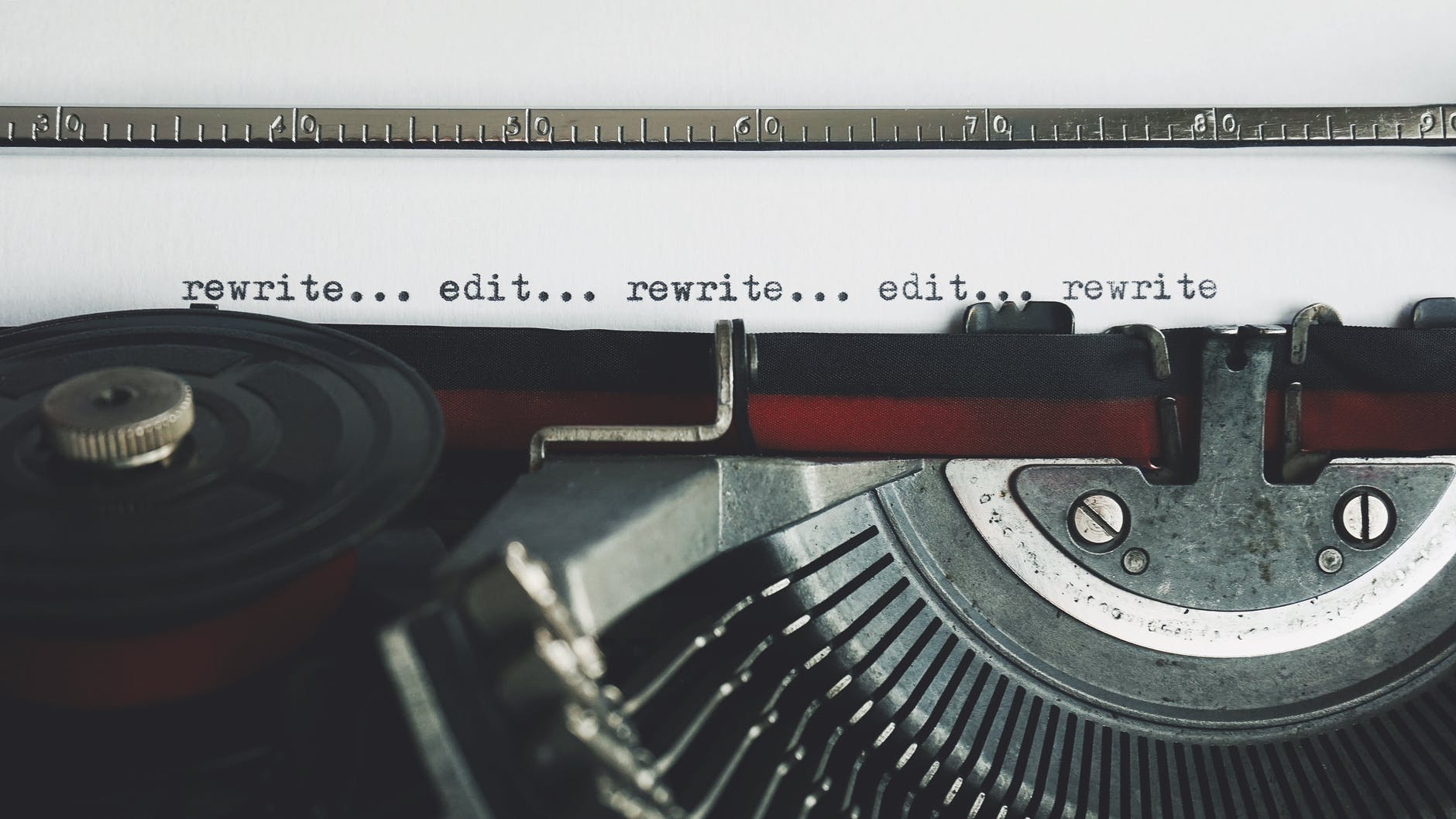5 Effective Tips for Self-Editing a Family History Book
May 11, 2022
“The secret to editing your work is simple: you need to become its reader instead of its writer.” — Zadie Smith
Editing is a critical component of the writing process. After all, a well-written document needs polishing to ensure high quality. A common misconception is that editing involves “correcting” mistakes.
While proofreading takes care of typos and linguistic issues, editing is not about “correcting” issues. Editing involves fine-tuning texts to ensure they clearly communicate their intended message.
Editing, therefore, must become another tool that allows writers to get their message out there exactly as they intend.
When it comes to family history books, self-editing is a crucial first step in ensuring the best possible manuscript. Self-editing allows writers to see areas for improvement and refinement.
But how does one go about self-editing their own family history book?
Read on, as we discuss the essential elements to the editing process, as well as five effective tips for self-editing a family history book.
What is the editing process?
Writers consistently edit their writing. There is an ongoing process of modifying words, sentences, and paragraphs throughout the text. This editing process may cause writers to get stuck while attempting to phrase their ideas appropriately.

Generally speaking, most people believe that editing pertains to correcting grammatical and style mistakes.
While editing certainly involves these tasks, reviewing linguistic elements is just one of the steps in the overall editing process.
The overall editing process involves four main areas:
- Content and Developmental Editing. Content editing can happen at any time during the writing process. This part of the process involves reviewing the flow, organization, tone, and pacing of the material. This edit is crucial for family history books as it ensures the book includes the information needed to represent the family’s true identity accurately. Thus, content editing may involve verifying the accuracy of the information and sources to avoid factual errors.
- Line Editing. Line editing is highly useful to ensure the smooth flow of the narrative. Mainly, this edit seeks to eliminate repetitious phrases and run-on sentences, clarify meaning, and spruce up boring passages. Line editing reviews paragraph structure so that the entire text matches its intended tone.
- Copy Editing. In this edit, a review of linguistic conventions is key. A good way to ensure consistency throughout the text is to follow the rules contained in a style manual such as the Chicago Manual of Style or the Associated Press Style Guide. Also, this review must ensure the text follows American or British English conventions to avoid mismatching them.
- Proofreading. Proofreading is generally the last step of the process. This edit focuses on spelling, punctuation, prepositions, extra spaces, and synonyms.
Please bear in mind that content and line editing do not aim to highlight grammatical and styling mistakes. While the content and line editing may signal issues, copy editing and proofreading must weed out these issues to ensure high quality text.
Why Editing is a MUST
The editing process is paramount to any successful family history book. It allows the writer’s message to surface throughout the text. Moreover, readers will get the most out of the information contained in the text.
In contrast, a lack of editing may cause a family history book to fail its purpose.
Furthermore, the people depicted in the narrative may become misrepresented due to a lack of adequate language use. Therefore, the editing process must become a crucial element of all family history book projects.
5 Effective Tips for Self-Editing a Family History Book
Family history book writers must ensure a high quality product. Thus, editing their manuscripts is an essential part of the entire process. While self-editing may sound a bit daunting, there are five things family history book writers can implement to ensure a top-notch editing process.
1. Automate proofreading.
The proofreading process can be painstaking and time-consuming.
In particular, proofreading long manuscripts may consume a significant chunk of time. In some instances, proofreading might even lead to significant delays in a family history book’s completion.
Fortunately, technology has facilitated proofreading through the use of automated tools. Automated proofreading tools such as Grammarly or Hemingway can greatly reduce the time needed to review grammar, spelling, punctuation, and major style issues.
While by no means perfect, these tools allow writers and editors to spot superficial issues, thereby freeing up time for more in-depth analysis and review.
Please remember that automated tools use artificial intelligence to review texts.
Therefore, one cannot expect these tools to replace the human eye.

Nevertheless, automated tools help save brainpower for line and content editing tasks.
2. Become the reader.
One of the biggest mistakes that writers make is to edit texts using a writer’s mindset. This writer’s mindset entails thinking about a text from the writer’s perspective as opposed to the reader’s perspective.
Indeed, the reader’s perspective is much different as the reader does not usually think about intent. The reader sees words in black and white. If the words do not convey their meaning adequately, the message will not get through to the reader.
Thinking like a reader also involves understanding the target audience. This understanding leads to using language, tone, and style that reflect the target audience’s thoughts and perceptions.
For example, a family history book intended for children and teenagers needs a more appropriate tone for a younger audience. In contrast, a scholars-oriented family history book would require a formal academic tone.
3. Think objectively.
Undoubtedly, a family history book project involves one’s emotions. These emotions are the “secret ingredient” that gives the family history book a unique flavor. However, writers must cast their feelings aside during the editing process.
How so?
When writers become too attached to their prose, it can be hard to rewrite some parts, move others, or eliminate sections.

Becoming overly attached to one’s writing can cloud judgment. Therefore, it is crucial to keep a level head.
Keeping a level head requires thinking objectively. Objective thoughts lead to a pragmatic editing process. Consider this common situation:
Family history books are laden with anecdotes. Nevertheless, anecdotes must contribute to the book’s overall narrative.
If an anecdote does not contribute to this narrative, it must go.
Making these decisions can be difficult, heartbreaking even.
The emotional attachment that comes with sharing a family’s most beloved stories may cause writers to face a dilemma. On the one hand, they are eager to include the most interesting stories in their family history book. On the other, it can be extremely hard to let go of stories that do not fit the book’s overarching theme.
Ultimately, maintaining an objective mindset can help determine what goes into the book and what does not. In the end, the material that does not make the cut can always become part of future projects.
4. Listen to others.
Self-editing often involves other people’s opinions. These opinions typically come from friends, family, co-workers, or colleagues.
Authors enlist third-party opinions in something akin to a beta reading project, where a group of people read the author’s manuscript and provide constructive feedback.
While this approach can yield some very good insights, it needs to follow a structured format. Otherwise, feedback may come haphazardly, essentially defeating the task’s purpose.
When enlisting third-party opinions from friends and family members, it is helpful to furnish them with a checklist they can use to provide structured feedback. This checklist can be as simple or as extensive as the author needs it to be.
The aim is to give the reader a framework they can use to hone their observations. Otherwise, broad statements and subjective valuations may overshadow the exercise’s purpose.
Consider this sample.
A family history book author used a Likert scale to gauge readers’ perception of specific elements. Here are the valuations:
- 1 = totally agree
- 2 = disagree
- 3 = neutral
- 4 = agree
- 5 = totally agree
The questions on the checklist looked something like this:
- Do you feel the book’s pace is appropriate?
- Do you feel the book provides enough information about the characters?
- Do you feel the book provides enough information about its historical context?
- Do you feel the book’s tone is appropriate given the topic and context?
- Do you feel the book is easy to read?
- Do you feel the book describes situations clearly?
Lastly, the checklist provides space for readers to fill in comments and observations. This space allows folks to shed more light on what they feel requires improvement, revision, or inclusion.
This exercise enables writers to harness feedback and tweak the narrative to accurately reflect third-party readers’ impressions. In lieu of a professional editor, getting real-life feedback from real people can prove to be a valuable source of feedback.
5. Follow a style guide.
Following a style guide is crucial throughout the editing process.
While the writing process may involve a free flow of ideas, the editing process must have as much structure as possible.
Therefore, implementing a style guide can help focus the editing process, thus maintaining consistency throughout the text.

Here are the three most common style guides in use today:
- Associated Press Style Guide
- Chicago Manual of Style
- APA Style Manual
These style guides are the most common since they have stood the test of time. All three guides are highly useful in helping editors revise texts to meet the required criteria for publishing.
Please bear in mind that there is one monumental reason why self-editors must swear by a style guide: Using a style guide provides objective criteria.
Writers can take these objective criteria to mold linguistic and style elements. In short, using a style guide removes the guesswork from the editing process. It eliminates ambiguities and allows writers to structure prose carefully to match the tone and target audience.
When to Hire a Professional Editor
Writing a family history book is a serious endeavor. The editing process is even more so. Consequently, authors may feel that outside help is necessary.
The question lies in knowing when to bring in outside help. So, here are five reasons why family history authors may choose to forego self-editing and enlist the help of a professional editor instead.
1. Content and Developmental Editing
It is often the case that authors find themselves with a massive manuscript but cannot seem to find an appropriate organization for it. In such circumstances, content editing is a must. A professional editor can take a manuscript to determine what should make the cut and what should not. From there, the author can refine the content to suit the book’s proposed content layout.
2. Lack of Editing Experience
When authors lack editing experience, it helps to bring in a professional editor.

Professional editors can tackle everything from developmental editing to proofreading.
By hiring a professional editor, authors can take the editing pressure off themselves and focus solely on researching and producing high quality content.
The professional editor will then ensure the content meets such high quality standards.
3. A Human Pair of Eyes
Even when automated tools save time and effort, a human pair of eyes is always welcome.
As of today, artificial intelligence cannot replace the value of the human brain. Therefore, family history book authors may choose to utilize automated tools for proofreading purposes but rely on a professional editor to review the manuscript.
This approach is highly useful when authors seek publication for their works.
4. An Objective Third Party
A professional editor is an objective third party. They can judge if information contributes to the overall narrative or not.
Moreover, professional editors do not have an emotional investment in the text.
While this does not imply editors are uncaring, they can see the forest for the trees. This objective insight is a valuable tool to ensure a top-notch product.
5. A Trusted Partner
Family history book authors do not have to go at it alone. Authors can enlist the help of a professional editor from the start.
In such cases, a professional editor can help an author produce a great text following a structured and measured method.
This approach is highly useful, especially for inexperienced writers. A professional editor’s expertise and guidance are crucial to seeing a family history project to fruition.

Final Thoughts
The editing process is just as valuable as the writing portion when producing a family history book.
While automated tools and style guides provide the fundamentals authors need to produce great texts, the role of a professional editor can take a great family history book to the next level.
A practical approach is to begin the self-editing process to refine a finished manuscript. Then, enlisting the assistance of a professional editor is important, particularly if the author plans to seek publication for their work.
It is pivotal for authors to view a professional editor as a trusted partner. In doing so, any family history book project will surely come to fruition regardless of how ambitious it may be.






























